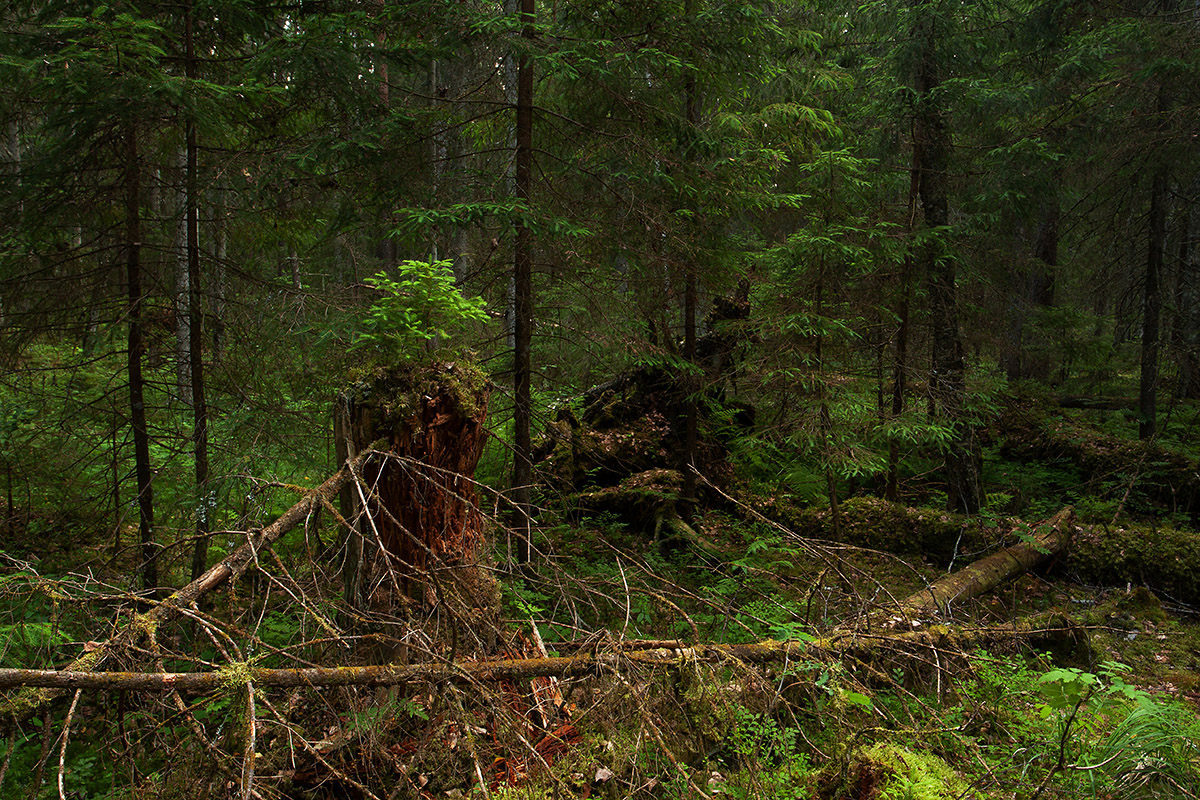Preservation of forest biodiversity, i.e. the ability to function and provide benefits even in the face of unexpected changes, requires historical continuity and ensuring spatial coherence
Approximately 20,000 species of plants, animals, and fungi live in Estonian forests [1]. Our most abundant species group is insects (estimated at about 10,000), and we have 2,000 to 2,500 species of fungi and up to 1,000 species of arachnids in our forests.
The most visible forest species to humans are those that are used as a natural resource or who share our interests. These species are very few in relation to the entire forest biota – they include:
- tree species that are important for forestry;
- insects that may pose a threat to tree species;
- wild game, including animals that feed in the forest;
- berry plants;
- mushrooms.
In addition, we know some other well-known plants, animals, birds, and protected species due to which there are restrictions on economic activities in the forest.
As about half of Estonia’s area is covered with forest land [2], it could be assumed that the species living in the forest are doing well. This is not always so. Most of the endangered species in Estonia are related to the forest – for example, the flying squirrel, the black stork, the western capercaillie, several eagle species. In order for these species to survive in our forests, they must be provided with sufficient habitats with suitable conditions.
As the forest changes over time and space, the habitats of the species are displaced in the space over time. In forests where the trees are of different ages and there is also dead down timber, there are species that do not do so well in the managed forests [3]. Such old natural forests are crucial for the preservation of the biota characteristic of Estonia. It is estimated that up to 2,000 species of organisms live in old forests that are more than a hundred years old [1].

Up to a quarter of forest species – mostly fungi and insects – are directly related to dead wood, which is more abundant in older forests. As old-growth forests and dead wood disappear, so do the habitats of the species that depend on them [1]. In recent decades, however, the volume of dead wood in our forests has been on the rise. This is mainly due to the increase in the area of strictly protected forests, which has also led to an increase in the area of older forests (both over 80 and over 100 years old) [5].
Forest species are threathened by habitat fragmentation and the drainage of bogs
Forest species are threatened by habitat loss and fragmentation. The reason is not the poor planning of protected areas, but the fact that the remaining old natural forests are fragmented. This is why protected areas alone are not enough to preserve old forest species, but managed forests must also allow species to move from one habitat to another [1]. Therefore, in order to ensure the biodiversity of old-growth forests, the forest landscape needs to be seen in a broader context, not just on the basis of protected areas, because the preservation of forest biodiversity, i.e. the ability to function and deliver benefits even in the face of unexpected changes, requires historical continuity and spatial coherence [4].
In order for the species richness of Estonian forests to survive and the forest to be able to offer the ecosystem benefits, the forest as an ecosystem must be sufficient. More attention must also be paid to draining of paludified forests. Extensive drainage leads to a reduction in species adapted to paludified forests and thus to the reduction of all biodiversity.
Last modified: 05.11.2021
__________________________________________________
[1] L. Kuresoo, M. Kohv. Metsade elurikkuse kaitse teeb edusamme. Eesti Loodus, 2/2011.
[2] Sirkas, F., Valgepea M. (toim). 2023. Metsavarud. Aastaraamat Mets 2021. Keskkonnaagentuur, Tallinn
[3] Põlismets – põline varandus
[4] Metsatagavara või puude juurdekasv ei loe elurikkuse seisukohalt midagi (Novaator, 23.12.2017)
[5] Aitsman, V., Sims, A. jt. 2019. Statistiline mets. 20 aastat statistilist metsainventeerimist Eestis. Keskkonnaagentuur. Tallinn.